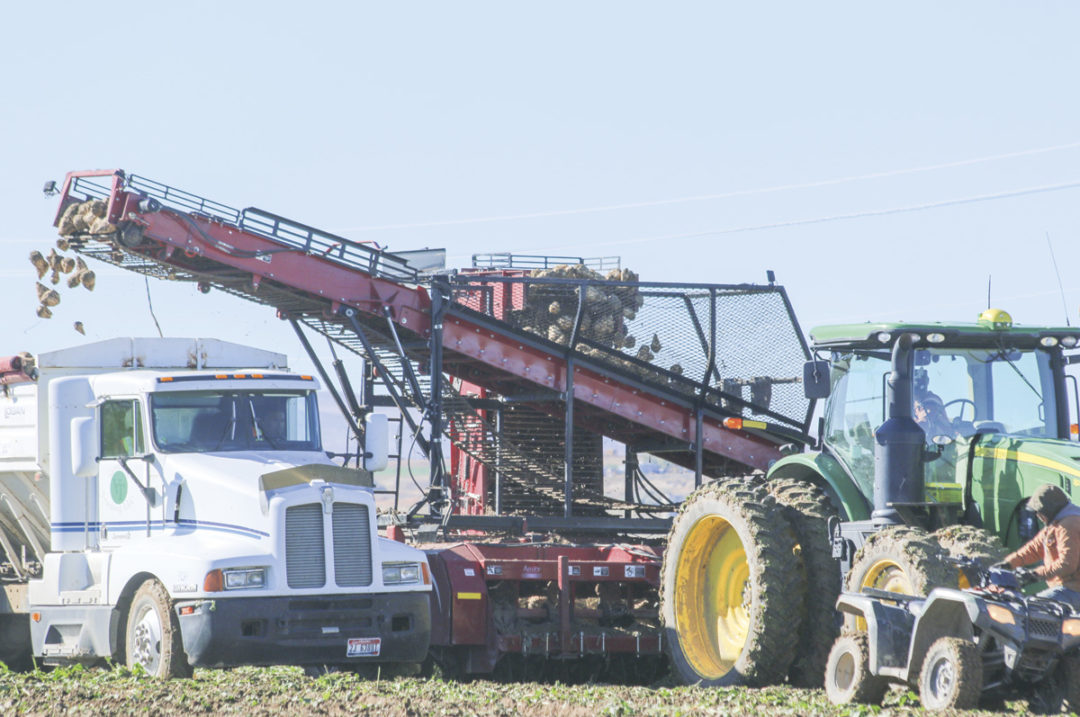From 2021-22, Linda Schott, University of Idaho extension specialist in nutrient and waste management, and a team from Amalgamated Sugar sampled the soil in 269 fields, which were all going into sugarbeet production. The fields had been managed under a wide range of management practices with various crops grown the previous year. Management practices included tillage, composting, manure applications, cover cropping over various soil types and irrigation systems. Samples were tested in her lab as well as with a handheld colorimeter. Schott presented her study as part of a soil health field day in 2022 and again in February 2023 at a soil health virtual meeting hosted by the University of Idaho Extension.
Some aspects of the study were not surprising, in that fields that had been in cover crops or fields with reduced tillage had more active carbon. Another non-surprising find was that a manure or compost application resulted in soils that had statistically greater active carbon if it had been applied in the last 12 months compared to those products not being applied in the last 12 months. (Manure and compost have carbon in them, so it isn’t surprising the carbon pools increased.)
“The really interesting component of this is that the previous crop did not matter,” Schott said. It didn’t matter if the field was coming out of potato production, corn, beans or grain. Unfortunately, however, the data did not correlate to yield or quality.
Schott said, “We have two of these colorimeters with a full kit. They'll be able to be borrowed or checked out during the upcoming season if anyone is interested in that. And we have kind of a way to teach you how to use this colorimeter. But essentially, the sample can be taken at any time of the year.” The test takes about 25 minutes to run in the field.
While these practices do not necessarily increase yield or quality, reasons to continue moving toward more carbon-holding practices and monitoring the results will assist producers in assessing whether they’re making an impact in their management practices. Also, it’s important to keep in mind that organic matter and organic carbon and total carbon do not change in our southern Idaho soils on any sort of medium-term basis; it's difficult to move that marker. “I think that this isn’t necessarily great for use for carbon markets per se, but it could be an indicator for carbon markets to kind of track because it is sensitive. ... I would anticipate that producers would potentially be able to reduce their synthetic inputs as your proxy improved – so actually the microbiology is doing more [of the] heavy lifting for you. You're not relying on synthetic inputs to the same degree,” Schott said.
What’s ahead for this project? Amalgamated and the Snake River Seed Alliance just funded a two-year follow-up project to this because researchers did not see a yield or quality change, to look at what other impacts are happening in the fields. “We're going to target 12 to 14 sugarbeet fields that have similar management practices and those that don't, and look at nitrogen mineralization, infiltration, aggregate stability and do a really deep dive into these other management parameters that could be important to saving water or reducing fertilizer input,” Schott said.
Regardless of any impact on quantity or yield, producers are interested in knowing how to maximize crops during drought and accompanying water allocation restrictions. It’s also important to assess sustainable practices, especially in the more sensitive regions so that producers aren’t pushed out because they’re not marketed as sustainable anymore. It’s important to document what effects these sustainable practices have (especially when it’s so hard to move the needle on some of the indicators of carbon sequestration).


.jpg?t=1687979285&width=640)


.jpg?height=auto&t=1713304395&width=285)


